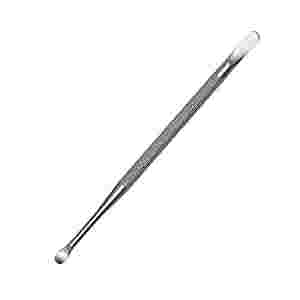Hi,
I’ve recently started enamelling and up to now I’ve been sifting. I want to try wet packing. What type of brushes are good for this? I’ve read that sable brushes should be used. Is this essential? What would be the reasons that they are better than others?
Also, are there any other accessories that anyone would suggest to make the work easier?
Many thanks,
Rodney
Hi Rodney, professional enamellers use a feather quill to load wet enamels, the quill is cut diagonally and as it is hollow it is like a tiny spoon when loading the wet enamel into the required spaces.
Cheers
James
James Miller FIPG
Thanks, James.
I might start with synthetic until I can find a seagull that is willing to donate a feather or two. 
Cheers,
Rodney
Hi Rodney, I checked with one of my enameller friends and he said that he uses quills from goose feathers to load his wet enamels.
Cheers
James
I use extremely fine sable brushes to wetpack enamels
1 Like
Can you share some specific brands / sizes that have worked for you, Linda? Without easily being able to go out to shop, I have struggled to find brushes that work.
I have used this: Da Vinci Maestro Kolinsky Brush - Full Belly Round, Short Handle, Size 5/0 | BLICK Art Materials
This is a Da vinci-maestro tobolsky - kolinsky series 10 5/0
I like it very much, but have wanted to find smaller/narrower. Even this size is hard to find in this country (U.S.).
1 Like
Thanks, Linda.
I live in New Zealand. I’ll try the art supplies shop in town, but for the brushes you recommend I might have to go online.
Is there a reason that sable (or goose quill) would be used instead of synthetic? I imagine history and tradition and these brushes were what enamellers had available to them. I wonder if they work better than good quality synthetic?
Cheers,
Rodney
I’ve just been reading about sables. The fur is unique in that it is soft whichever direction it is rubbed. That would be why it’s favoured by artists. Not so happy for the sable.
1 Like
I have used Windsor & Newton Seies 7 minature Kalinsky sable brushes which are very effective, like Mr Miller, a large wing pinion quill, ( in my case from the sea eagles that frequent Culburra Beach) and also a series of variously shaped “spoons” formed from 2mm o.d. copper tubing.
Kind regards and best wishes for your enamelling projects.
Don Iorns
Thank you for that. Making ‘spoons’ out of copper tube is an interesting idea. Someone suggested shaping the end of a drinking straw. That would be large though. I suppose in the end it will be trial and error and working out what works best for me and the pieces I am making.
Different brushes have differing amounts of spring. Running the gamut from rather stiff to limp depending on acrylic/oil/watercolor applications. So that might be a factor in what brushes might be best.
Watercolor brushes are designed to release water so maybe that’s why sable works?
Staff at any decent art supply store could give you more info.
1 Like
Thank you. That’s helpful. I’m sure I’ll build up a collection for different purposes.
I’m relatively new to wet-packing enamel and have been using fake sable brushes with no problem, except that I find that it can be difficult to make sure all the grains are cleaned from the bristles when I switch colors. I’ve been planning on trying the quill version, which would seem to solve that problem.
This may seem out of left field, but a cuticle pusher might work nicely.

Amazon has quite a variety, some in sets of different sizes, and plastic ones can have a cavity carved out of the pushing end with a ball bur.
Neil A
Synthetic brushes work fine for me too. Just choose very fine brushes. 3/0 or 5/0
That’s a great suggestion. Thank you.
Maybe get a brush for each color and wash them carefully between applications. Perhaps wash them with a little diluted detergent to help the grains of glass to release from the fibers.
One thing you might try is to suspend the brushed in an ultrasonic tank for a bit. That should shake any of the glass attached to the fibers loose. Then you can pour the tank soap/water solution through a coffee filter to save the enamel to use as a counter enamel later on. Just a thought…
1 Like
Great suggestion. Thank you!

